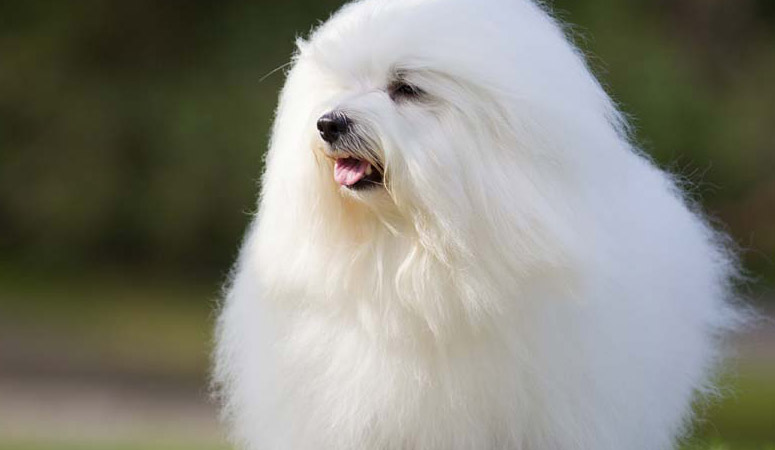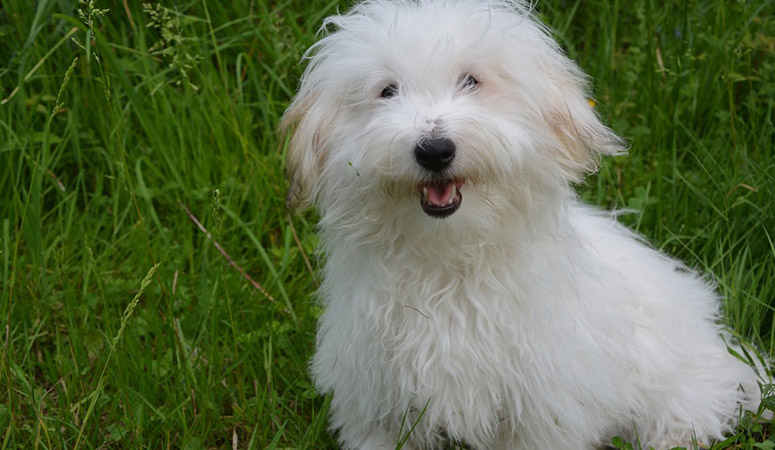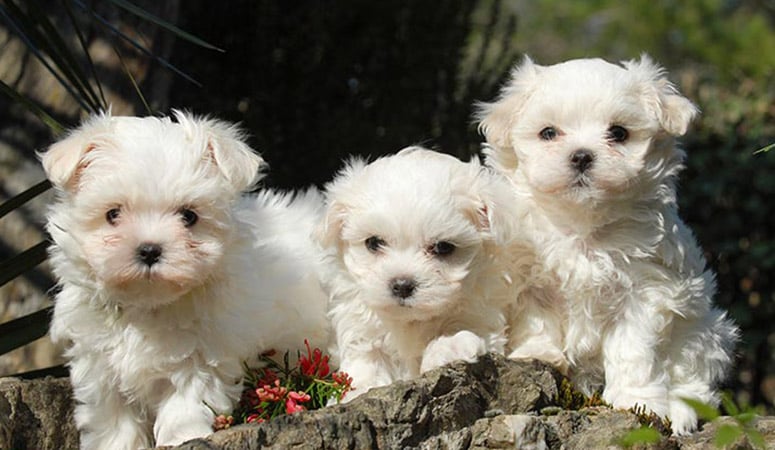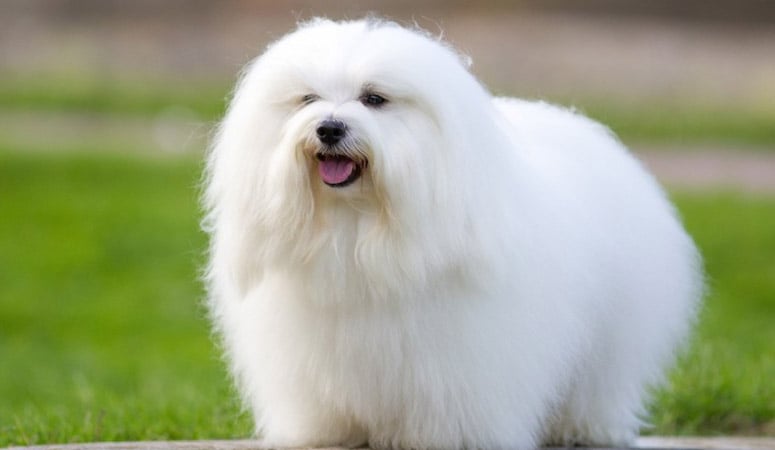Coton de Tulear
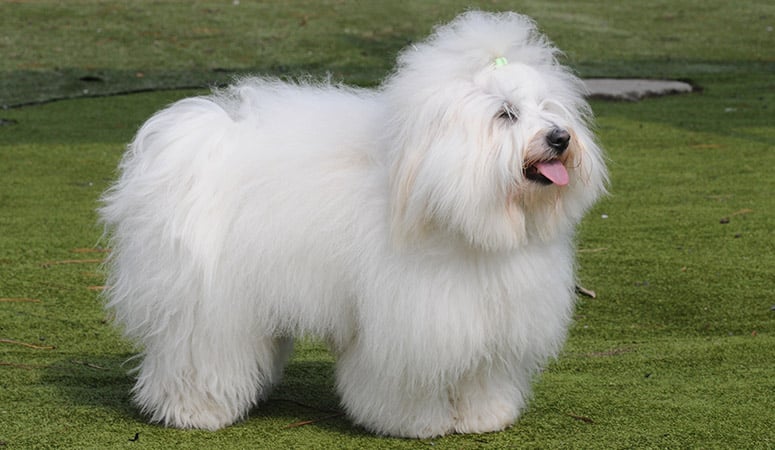
Originated from a group of small white dogs who swam across the Malagasy channel following a shipwreck, the Coton de Tulear is a small breed named for the city of Tulear. He has white and cotton-like coat, sometimes with gray, black, or tri-colored markings. As “Royal Dog of Madagascar” with sociable nature, affectionate charm and gentle temperament, they are favored by the Merina royal family of the Malagasy people.
| Other Names | Coton Du Tulear, Coton, Cotie |
| Color | White, Black & White |
| Height | Males: 10-11 inches. Females: 9-10 inches. |
| Weight | Males: 9-15 pounds. Females: 8-13 pounds. |
| Life Span | 15-19 years |
| Personality | Charming, Bright, Happy-Go-Lucky |
| Exercise | Regular Exercise |
| Origin |
| Popularity | #81 |
| Groom Needs | Daily Brushing |
| Kids Friendly | Yes |
| Dog Friendly | Yes |
| Watch Dog | |
| Family Dog | |
| Litter Size | 4-6 puppies |
Coton de Tulear Pictures
Coton de Tulear Video
Introduction
Isn’t he cute, this soft, cotton-like coated dog – in fact, Coton is French and it means “cotton”! They are very intelligent, observant, and adaptable. He is a happy little dog, happiest when spending their time with their owners. They come in colors such as white with light brown spots, black and white, or black, but as it gets older, the spots usually fade until the dog is pure white. His coat needs to be brushed at least 3-4 times a week. He was bred to be a companion dog. They form close bonds with their human owners. They don’t do well when they are left alone, becoming unhappy and bored. They will compensate for this by barking and chewing destructively. He is peaceful and gentle with both humans and other animals, forming strong bonds. Socialization is important to build with this little cotton-ball because he can be timid, but he will respond to non-forceful training. He wilts when you are harsh with him. Unfortunately, Cotons are slow to house-train. If you are a first time owner of this dog, training can be a challenge because they have minds of their own. He is about 10 inches at the shoulders and weighs about 15 pounds
Living with Coton de Tulear
With the distinguishing features of white, long, soft, and thick coat, the Cotons need little shedding, mainly in the spring. You should get your dog accustomed to being brushed and examined when he’s a puppy, which may make grooming easier.
Brush the coat three or four times a week with a pin brush that has uncoated metal pins to prevent matted fur. A fine-toothed metal comb and a smaller comb for the face will also help keep your Coton looking sharp. Special attention should be paid to the areas behind the ears, legs, and elbows while brushing.
Bath your dog with a whitening shampoo weekly, every two weeks, or monthly to keep him looking his best, which depends on how dirty he gets.
Trim his nails once or twice a month. Short nails keep the feet in good condition and won’t scratch your legs when your Coton jumps up to greet you.
Brush your Coton’s teeth at least two or three times a week to remove tartar and bacterial buildup.
Check the ears regularly and remove any excess hair, wax, or debris to avoid ear infections.
Fairly active, the Coton needs a moderate amount of exercise. They can adapt to most living situations and are fantastic apartment dogs. They aren’t often noisy, and are happy to play indoors until it’s time for a walk.
Chasing a tennis ball around his backyard can keep him active both in his body and mind.
The majority of the exercise a Coton needs can be gotten through indoor play or a few laps in the fenced yard, but a daily walk with his human at a slow speed will keep him in good weight and condition.
Lots of attention from his owner, and plenty of interesting toys to keep him occupied, which will make him do best, but bored and unhappy Coton can become destructive.
A high-quality dog food should appropriate to the dog’s age, size, activity level and metabolism to meet all the nutrients that the breed needs. It’s best to feed a mature dog twice a day, making sure it’s good quality food that meets all their nutritional requirements.
Coton de Tuléar are not prone to food guarding behaviors, but children should never be allowed to touch or remove food from any dog while he is eating.
Watch your dog’s calorie consumption and weight level to keep your dog in good shape by measuring his food and feeding him twice a day rather than leaving food out all the time.
Clean, fresh water should be available at all times.
Learn about which human foods are safe for dogs, and which are not. Check with your vet if you have any concerns about your dog’s weight or diet.
The Coton is generally healthy, and does not exist, but that any incidences are of an extremely low percentage of genetic health issues. Some specific conditions include luxating patellas, hip dysplasia and progressive retinal atrophy, etc.
It’s important to protect puppies from jumping on and off furniture because their joints are still developing.
Reputable breeders have their dogs’ eyes certified annually by a veterinary ophthalmologist.
Coton breeders work to keep the breed from health problems by doing a genetic screening of all breeding stock. Besides, the breeder should take their dog to the vet to finish some common health test, such as patella evaluation, ophthalmologist evaluation, hip evaluation and cardiac exam.
Total Annual Cost: $2406.6
Cost is estimated for the first year and may vary depending on many factors, such as dog food, health care, leash, collar, licensing, possible fencing, crates, training and obedience classes, dog-walking, grooming, treats, toys, flea, tick, and heart-worm meds, microchips, etc.
The Coton de Tuléar is not a hunting dog. Incredibly intelligent, eager to please, and happy to perform, it’s easy for the breed to learns basic obedience.
Alert and naturally territorial, The Coton should be well socialized from an early age so that they will enjoy going with you wherever you go.
Agility, advanced obedience, rally, and playful tricks are training activities in which the Coton will eagerly participate. The breed’s propensity for tricks and games can be harnessed with praise and treats.
They take to housetraining slower than many breeds, so the breeder needs great patience to promise the consistency of the training.
Crate-training can help him learn to wait until he’s taken outside to potty, as well prevent him from getting into trouble when you’re not around to supervise.
They are intelligent, but can be stubborn. Don’t confuse their sense of independence for lack of intelligence or you’ll find that the dog is the one training you.
History
The Coton de Tulear origins aren’t in France, but he originates from a seaport called Tulear at the tip of Madagascar.
The Bichon Frise and the Maltese are his ancestors. The story goes these dogs were kept as companions to sailors out at sea but when the ship sank the dogs swam to shore and bred with the native dogs. Eventually, the Coton de Tulear was produced. The Merina people of Madagascar kept Coton de Tulears as companions.
When France claimed rule over Madagascar in the 17th century they adopted the mixed breed of dogs as their own and ruled that no commoners could own the dogs.
In the not too distant past, there are DNA results from around the world that show the Coton de Tulear sitting genetically between the Portuguese Water Dog (PWD) and the Pumi breed.
When Madagascar received its independence in the 1900s, tourism increased and many Coton de Tulears were exported out of the country. By 1992 there weren’t many Coton’s left and Madagascar started limiting the dogs that could be exported.
The first Coton de Tulear arrived in America in 1974 and was accepted by the AKC in 2014.
Helpful Information
Breed Club: UNITED STATES OF AMERICA COTON DE TULEAR CLUB
Breed Club Link: https://www.usactc.dog/
Breed Club Rescue: USACTC, Inc
Breed Club Rescue Link: https://www.usactc.dog/services/rescue/

